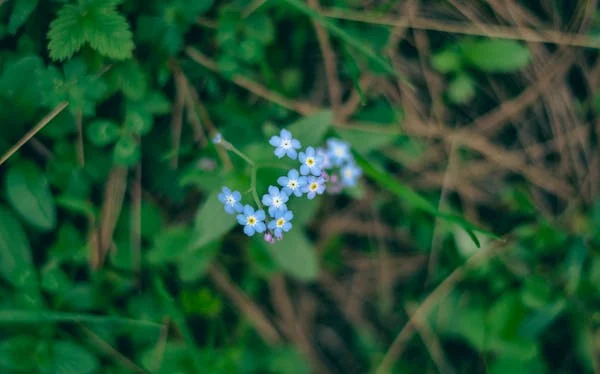Preserving the delicate beauty of flowers is truly magical. Remember those joyful days spent in the garden with loved ones, picking the freshest blooms to bring indoors? Preserving these flowers can keep those cherished memories alive. Whether you’re looking to create stunning art, hold onto mementos from special moments, or dive into a new hobby, flower pressing is a delightful and rewarding activity.
Pressed flowers have an enduring charm and can be used in various creative projects. If you’re new to flower pressing, don’t worry. This guide will walk you through everything you need to know, from selecting the best flowers to pressing them correctly. Let’s explore the enchanting world of flower pressing.
### Choosing the Right Flowers for Pressing
Selecting the ideal flowers is crucial for creating beautiful pressed specimens. Opt for flowers that are close to full bloom and free from blemishes. The best time to collect flowers is in the morning after the dew has evaporated. Ensure the flowers are dry before pressing, as damp flowers can become moldy.
If you’re using flowers from a bouquet, keep them in water until you’re ready to press them. Cut the stems at an angle and place them in a vase with flower food to maintain freshness. Remember to replace the water daily and remove any leaves that will be submerged.
For larger flowers with multiple layers of petals, consider separating the petals before pressing and then reassembling the flower if desired.
### Seasonal Flower Picking
Different seasons offer a variety of flowers perfect for pressing. In spring, you can find snowdrops, dwarf daffodils, fritillaries, and primroses, which are colorful and easy to press. Summer brings a wealth of wildflowers like buttercups, clover, red campion, and stitchwort—simple flowers that often press well. Autumn introduces vibrant leaves from trees and plants such as peony, heuchera, and cyclamen, which can add rich colors to your collection.
### Preparing Flowers for Pressing
Wildflowers can wilt quickly, especially in the summer heat. To keep them fresh, bring a plastic tube with a lid filled with water on your flower-picking trips and place the flowers inside immediately. Alternatively, wrap them in a kitchen towel or fabric soaked in water.
Revive wilted flowers by cutting the stems at an angle and placing them in slightly warm water. Avoid pressing flowers when they’re wet or damp, as they may stick to the pages and become damaged. Lay them out on a kitchen towel to dry and lightly blot with absorbent paper to remove excess moisture.
### The Pressing Process
Pressing flowers is a straightforward process that requires patience. Here’s a step-by-step guide to help you start:
1. **Gather Your Supplies**: You’ll need books, newspaper, card, PVA glue, and a pen.
2. **Pick Your Flowers**: Carefully pick flower sections, avoiding damage to other flowers or overharvesting.
3. **Prepare the Book**: Open a book and line it with newspaper. Place your flowers flat on the page.
4. **Press the Flowers**: Close the book and weigh it down with heavy books. Store the pile in a warm, dry place and check on your flowers daily.
5. **Remove the Flowers**: Once dry, carefully remove the flowers from the book. Ensure they are completely moisture-free before starting your projects.
### Tips for Effective Pressing
Not all flowers press easily. Some, like bluebells, retain moisture longer and may mold. Bulkier plants can also be challenging. To ensure even pressure, make sure every part of the plant is in contact with the newspaper.
Dry flowers quickly to preserve their color. Place specimens near a radiator or central heating to provide steady warmth, or warm the newspaper before use to drive off moisture.
Newspaper is effective for covering your plants as it’s absorbent and has antifungal properties. For succulents or plants with large stems, use kitchen roll to absorb excess moisture on the first day and discard it.
When pressing multiple specimens, add extra paper and card to ensure all parts of the plant are evenly pressed to prevent shrinking.
### Creative Uses for Pressed Flowers
Once you’ve mastered the technique, there are countless creative ways to use pressed flowers:
– **Framed Pictures**: Arrange pressed flowers in a frame for beautiful artwork.
– **Bookmarks and Photo Frames**: Decorate bookmarks and photo frames with your pressed flowers.
– **Cards**: Craft unique greeting cards with pressed flowers for friends and family.
– **Herbarium Sheets**: Create a collection of local plants for educational purposes. Lay out the plant naturally, displaying both sides, and add a label with the plant’s name, location, date of collection, and collector’s name. This adds scientific value to your collection.
### Pressing Matters: Your Flower Journey Awaits
Flower pressing is a delightful hobby that lets you preserve nature’s beauty. Whether you’re creating art, keepsakes, or a botanical collection, mastering the art of pressing flowers is essential. Choose the right flowers, prepare them correctly, and use effective pressing techniques. With patience and practice, you’ll craft stunning pressed flower projects.
Ready to begin your flower pressing adventure? Gather your supplies and start creating beautiful pressed flower masterpieces. Happy pressing!




